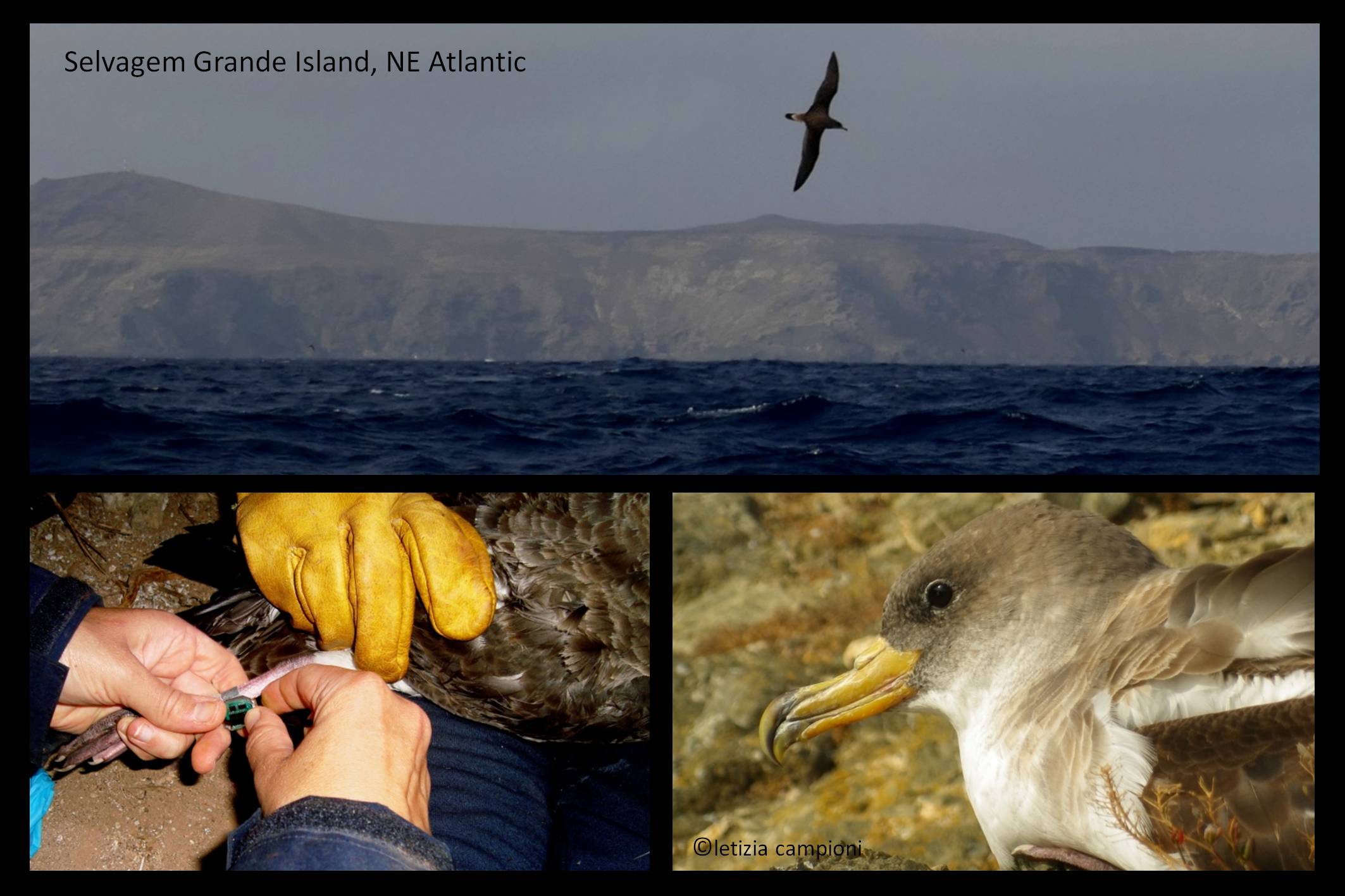Letizia Campioni (Marine and Environmental Sciences Center, Instituto Universitário, Lisbon, Portugal) and colleagues have published in the Journal of Animal Ecology on tracking immature Cory's Shearwaters Calonectris borealis at sea.
The paper’s abstract follows:
- “The processes that drive the ontogeny of migratory strategies in long‐lived animals with slow maturation remain enigmatic. While some short‐lived migrants are known or believed to repeat the same migratory patterns throughout their lives, little is known on the time required for immature long‐lived migrants to progressively acquire adult‐like migratory behaviours, or which aspects take longer to refine during the maturation process.
- Here, we studied the ontogeny of long‐distance migratory strategies and related patterns of spatial distribution in a long‐lived seabird species during the annual cycle. To do so, we deployed light‐level geolocators on 4‐ to 9‐year‐old immature Cory's shearwaters (Calonectris borealis) and on breeding adults.
- We revealed that migratory timings and destinations of young shearwaters progressively changed with age. The effect of ageing was remarkably evident on spring migratory performance and phenology. Birds gradually shortened the duration of the non‐breeding period by advancing departure date and reducing travelling time, which resulted in a sequential arrival at the colony of the various age contingents. Ageing immatures gradually changed from a more exploratory strategy to a more conservative way of exploiting resources, reducing both their year‐round spatial spread across oceanic domains and the total distance travelled. Immatures always performed a trans‐equatorial migration to the Southern Hemisphere, contrasting with 17% of the adults which remained in the North Atlantic year‐ Finally, during the breeding season immatures were widely dispersed through the North Atlantic reducing their overlap with breeding adults.
- Our long‐term study provides empirical support to the hypothesis that in long‐lived species, the refinement of migratory behaviour and year‐round spatial distribution is a progressive process mediated by age and experience, where life stage constraints and competition for resources may also play a role. The emerging pattern suggests that for some avian taxa, the ontogeny of migratory strategy is a prolonged, complex and dynamic process.”

With thanks to Letizia Campioni.
Reference:
Campioni, L., Dias, M.P., Granadeiro, J.P. & Catry, P. 2019. An ontogenetic perspective on migratory strategy of a long‐lived pelagic seabird: timings and destinations change progressively during maturation. Journal of Animal Ecology doi.org/10.1111/1365-2656.13044.
John Cooper, ACAP Information Officer, 31 July 2019

 English
English  Français
Français  Español
Español